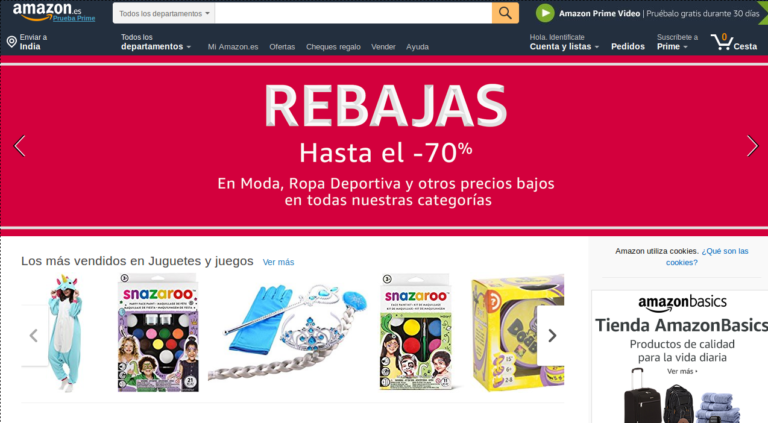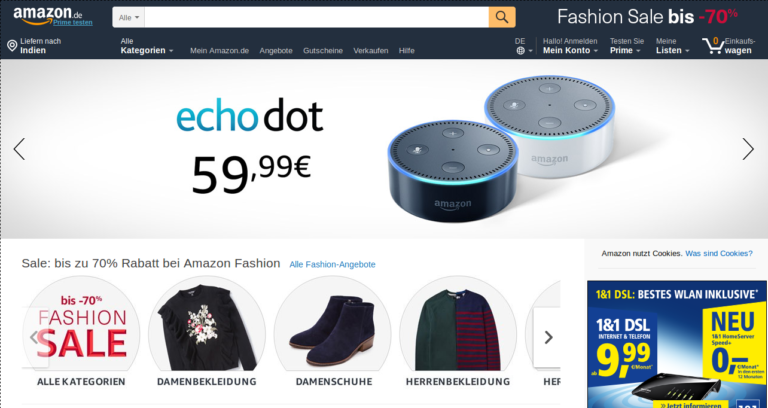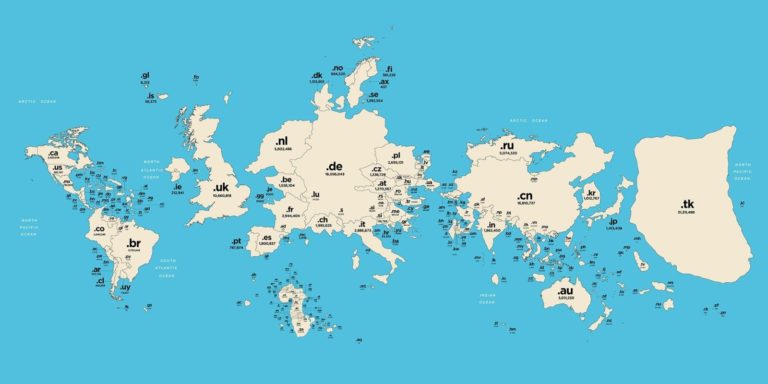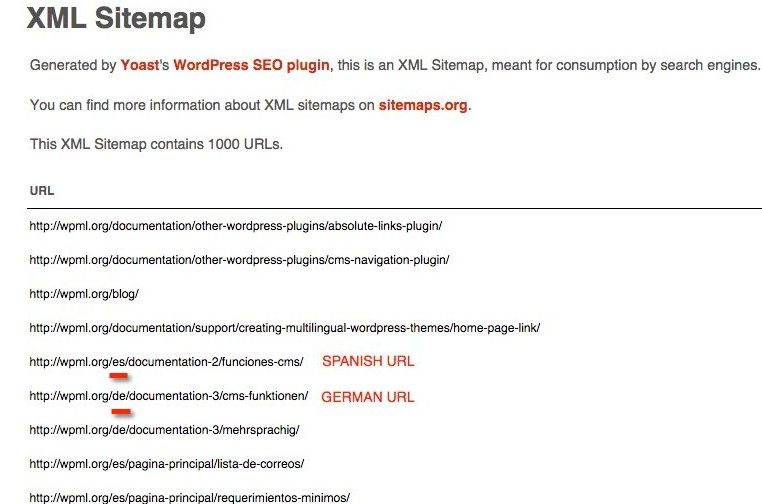How you ever wondered why some businesses effortlessly take over the online space from the word go while others are still seeking the opportunity to break out of their local markets. Does that mean the latter are selling the wrong products or are they not providing optimal services?
Well, NO!
It’s simple ― Customers only buy the product when they truly understand the advantages it has to offer. Infact, as per a survey conducted by Common Sense Advisory, 56.2% of consumers give more weightage to obtaining information in their own language than price. So the key to international online success lies in optimizing your website for a variety of regional languages with localized SEO, popularly known as Multilingual SEO.
Consider the case of Amazon. The ecommerce giant is now the largest Internet company by revenue in the world, surpassing its counterparts like Walmart, Costco, eBay, and Alibaba. What helped Amazon diversify from an online bookstore to a multinational marketplace is its multilingual website that operates in 18 different languages including Chinese, Japanese, Spanish, Italian, French, Polish, Turkish, and what not.

(Courtesy: https://www.amazon.it/)

(Courtesy: https://www.amazon.co.jp/)

(Courtesy: https://www.amazon.de)
Moreover, 60% of the world’s top global brands have gone multilingual offering an average of eight languages for their websites.
The universal success of such brands makes international SEO even more vital than local SEO for online businesses. So if you planning to expand yourself to welcome an global audience, having an international SEO strategy is important.
In this multilingual and multiregional SEO guide, we’ll help you crack the morse code of creating multinational websites that rank well on Google.
1. Start by targeting the RIGHT region/language/country
The first thing you need to do is determine what country, its regions, and languages you will be targeting based on your niche. This will help you create a layout for your new international website.
Does your European website needs to diverse in regional languages like Danish, Dutch, German, French, or Italian? Or if you’re based in the United States, ponder whether you have anything beneficial to offer to French Canadians or something that a sizeable Spanish population will like?
Take for example Google. It doesn’t sell us anything yet it is most visited website in the world. The real reason behind Google’s enormous popularity is its global footprinting in 192 countries where it offers all its current services in regional and local languages.
In India, Google offers its services in 10 languages including English, Gujrati, Punjabi, Marathi, Kannada, Tamil, Telugu, Bengali, Malayalam, and Urdu.
(Courtesy: Google India)
2. Decide whether you should opt for separate domains, subfolders, or subdomains?
Once you have listed down all the countries, regions, and languages you’ll be catering to, its time to choose the domain and URL structure that will make it easy for search engines to segment your website for geotargeting.
There are multiple website architecture options available with their own merits and drawbacks:
Separate ccTLDs domains

Although expensive, a ccTLD a will fetch your website a higher SEO value for country-based search results.
Example
- google.co.uk
- google.fr
- google.de
gTLD subdirectories
Easy to setup and low maintenance, gTLD subdirectories use webmaster tools for geotargeting. But the URL structure makes its hard for users to differentiate the regional websites from one another.
Example
- www.apple.com/ca/
- www.apple.com/fr/
- www.apple.com/de/
Separate gTLD sub-domains
gTLD subdomains are allow easy separation of websites making it easy for you to set them up and for webmaster tools to differentiate geotargeting.
Example
- en-gb.facebook.com
- fr-fr.facebook.com
- de-de.facebook.com
Separate pages / URL extensions
URL parameters makes it easy to diversify your website using just one webpage URL.
Example
- youtube.com
- youtube.com/?hl=fr&gl=FR
- youtube.com/?gl=DE&hl=de
#3. Select the best CMS for your new international website
If you have an up and running website, consider redesigning it using a multi language-friendly CMS. New-day content management systems like WordPress, Magento, Drupal, Joomla provide you with a range of services to help you establish multiple websites in different languages with shared database.

#4. Submit multilingual sitemaps
Now that you have a basic site structure, the next logical step is to establish a multilingual site map. Just like a normal site map, a localized sitemap will assist search engines in identifying the regional content on your website and increases your chances in showing up higher in region-specific searches.

Simply use rel-alternate-hreflang link elements (which we’ll discuss in the following steps) in the HTML and XML sitemaps to specify and differentiate between the languages you are targeting.
#5. Should you invest in an international host?
One question that might be bugging you is whether you server location is a factor in setting up a regional website. Well the answer is no! Search engines use a vast number of factors such as location, domain extension, contact address and number on the website and more to determine the location of your business.
The only add-on a localized server will provide you is an improved site speed for your users. If you are targeting Spain, France, and Portugal, it is smart to find a CDN host in Europe rather than setting up a different server in every country.
#6. Create landing pages using ‘hreflang’ annotations
Now that you have decided upon a URL architecture, server location and sitemap, it is time for localized SEO landing pages. Using the rel=”alternate” hreflang=”x” annotation can be handy as it serves two purposes:
- It helps Google identify which version of your page should be served to which regional visitor.
- The rel=”alternate” tag helps identify duplicate content.
For the primary purpose, Google allows you to use the hreflang tag in three ways. If you are offering your website content in two languages, let’s say English and Spanish, you can
- Add HTML link element in the header
Inserting a link element in your webpage’s URL to indicate es.example.com as the Spanish version. Example:
<link rel=”alternate” hreflang=”es” href=”http://es.example.com/” />
- Use a HTTP header
While publishing non-HTML files like PDFs, you can use a HTTP header to point out the different version of the URL. Example:
Link: < http://example.com/es/>; rel=”alternate”; hreflang=”es”
- Submit as a sitemap
If your aren’t interested in using markup, submit all the language version related information to the Webmaster in your Sitemap.
PRO TIP: If you don’t have a language specific landing page but want to cater to audiences from all regions, you can use a new markup from Google called “x-default”. The annotation will help you specify a default page for visitors that don’t belong to your targeted regions. Example:
<link rel=”alternate” href=”http://example.com/” hreflang=”x-default” />
The Bottom Line
The above factors are just the tip of the iceberg when it comes to multilingual SEO. As search engines are always evolving, so are the international SEO strategies. A few more multilingual SEO tips can be:
- Region and language specific target keywords.
- Grammatically correct website content translation and meta tags such as meta description and meta title.
- On-page meta information such as title, description, keywords, copy, headings, images, products, internal linking unique to the language and region you are targeting.
we are sure by using these 6 practices and keeping track of the new ones you can build out a better multinational and multilingual SEO strategy that will expand your business and get you new customers.


